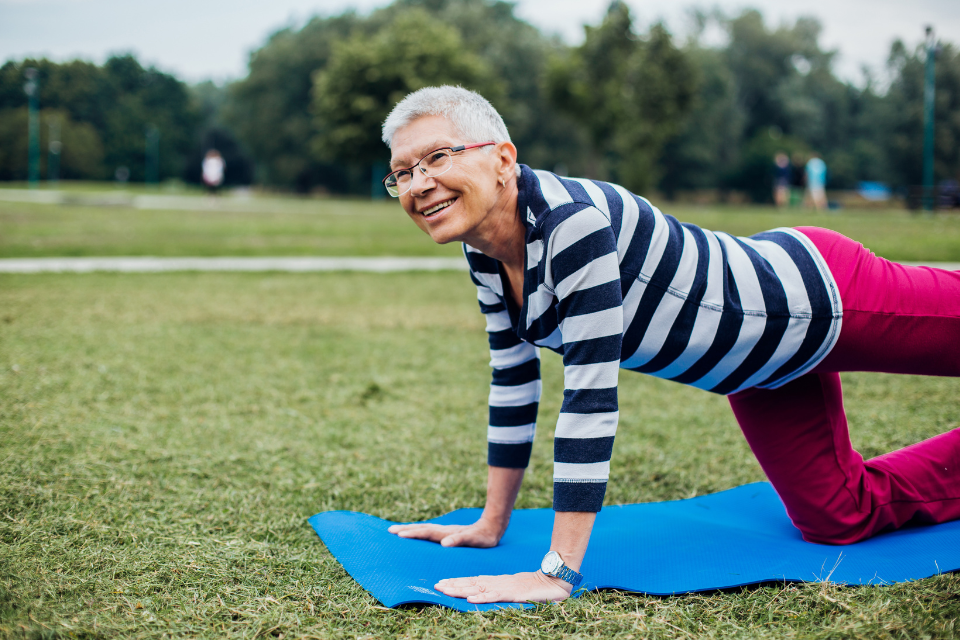Yoga is an ancient practice that promotes physical and mental health and well-being through the emphasis on breathwork, holding physical postures, and meditation. Research shows that yoga has significant health benefits, including stress relief, support of healthy activity habits, and improved sleep.
Frequent yoga practice has been shown to help alleviate symptoms of chronic illnesses such as pancreatitis. If you’re a pancreatitis patient wondering if yoga is right for you, keep reading to learn more about this practice and its potential benefits.
What is pancreatitis?
Pancreatitis occurs when the pancreas, an organ located in the abdomen, behind the liver and stomach, becomes inflamed. The pancreas plays an important role in regulating blood sugar levels and produces essential enzymes that allow the body to digest nutrients from the food we eat. There are 3 types of pancreatitis, which are determined by how long it lasts and if there is any permanent damage to the pancreas. Acute pancreatitis (single episode) is the inflammation of the pancreas for a short period of time (typically days to a week). Recurrent acute pancreatitis (RAP) consists of recurring episodes of inflammation. Chronic pancreatitis is when inflammation of the pancreas causes long-term scarring to the pancreas. This can cause digestive problems, including exocrine pancreatic insufficiency (EPI), and may eventually progress to type 3c diabetes.
Learn more about chronic pancreatitis.
Yoga for Pancreatitis
There are many different styles of yoga that pancreatitis patients can practice with the guidance of a qualified instructor. Some yoga styles are more challenging than others, so it’s important to consider your personal fitness goals, physical limitations, and what’s best for your body.
Different styles of yoga include:
- Yin. Yin yoga is slow and meditative. It involves deep, active, and floor-based stretches that are held for several minutes. Its goal is to improve the flexibility of muscles and connective tissue. During Yin, it’s important to focus on your breath and use props when needed to get into position.
- Restorative. Like Yin, Restorative yoga is slow, meditative, and floor-based. Its goal is complete mental and physical relaxation through gentle stretches with the help of props. These poses aim to relieve tension in your joints and can be held for several minutes.
- Iyengar. Iyengar yoga focuses on slow movements and the use of props to allow people of different abilities to get into various poses and focus on alignment. It includes both standed and seated positions held for long periods of time.
- Vinyasa. Vinyasa yoga, also referred to as flow yoga, is a more challenging and active style. It involves quickly moving through various poses, with a brief hold on each pose. This type of yoga may be heated, depending on the studio you go to.
- Power. Power yoga is an athletic style of yoga that links breath and movement through flowing poses. This type of yoga is more physically challenging and provides a full-body workout. It may also be heated, depending on the studio you go to.
Benefits of Yoga
While yoga isn’t a substitute for medical treatment or a cure for pancreatitis, it can be helpful for managing pancreatitis pain and staying active with the condition. Research suggests that yoga can help reduce symptoms associated with pancreatitis and improve overall health.
Potential benefits of yoga for pancreatitis include:
- Pain Management. Yoga postures like gentle stretches and twists can help relieve pain associated with pancreatitis. The focus on mindful movement can reduce muscle tension, easing discomfort.
- Reducing Stress and Anxiety. Chronic pancreatitis often leads to stress and anxiety. Yoga’s emphasis on deep breathing and relaxation techniques can calm the nervous system, reducing stress levels.
- Improving Digestive Function. Yoga promotes healthy digestion through poses that stimulate the abdominal organs. This may help manage digestive issues common in pancreatitis.
- Improving Overall Well-being. Yoga fosters a sense of well-being by improving physical and mental health. This holistic approach can benefit individuals dealing with the challenges of pancreatitis that affect the overall quality of life of patients.
Risks of Yoga
Yoga can be a form of low-impact physical activity, so its potential risks are typically low when performed with the guidance of a qualified instructor. Common injuries in yoga include sprains, strains, and knee or lower leg injuries.
Those aged 65 or older have a higher rate of injury when practicing yoga. If you’re an older adult, you may need to be particularly cautious when it comes to yoga, especially if you are trying it for the first time or have been out of practice. You can reduce your chances of yoga-related injuries by practicing with a qualified instructor who understands your specific needs and challenges, avoiding advanced poses, and staying cool and hydrated.
Other people who may have an increased risk of injury while practicing yoga include those with previous knee or hip injuries, lumbar spine disease, severe high blood pressure, balance issues, and glaucoma.
Your journey into yoga for pancreatitis should first start with a conversation with your healthcare provider. They can offer guidance tailored to your specific condition and recommend suitable modifications or precautions based on your health history.
Yoga Preparation
Before you begin your yoga practice, it’s important to be properly prepared. Always practice with the guidance of a qualified yoga instructor and share how your body feels and responds to the various stretches and poses. Here are other things to keep in mind before you begin:
- Safe Yoga Space. Creating a peaceful and safe environment for your practice is essential. Find a quiet and clutter-free space where you can focus without distractions. Use a yoga mat or a non-slip surface to prevent accidental slips or falls during your practice.
- Breath Awareness. Breathing is a fundamental aspect of yoga practice, especially for those with pancreatitis. Deep, mindful breathing can help manage stress and pain. Incorporate slow, controlled breaths into your practice to calm your nervous system and enhance your body’s ability to heal.
- Props for Comfort. Props like yoga blocks, straps, and cushions can be valuable companions in your yoga practice. They can provide support and comfort, making poses more accessible and enjoyable. For instance, a block can provide stability in a yoga pose that requires balancing.
- Hydration. During a yoga class, you may sweat, so staying hydrated is important for replacing the fluids you lose.
- Attire. Wearing breathable clothing can help keep you comfortable and cool as you bend and stretch through different poses.
Things to Consider
Meditation
Meditation is an essential element of yoga and a valuable practice for patients managing chronic illnesses. While meditation can take many forms, its primary goal is to direct focused attention to the mind and body. This practice fosters a strong mind-body connection, which in turn can have a calming effect, promoting relaxation and contributing to overall well-being. Meditation often includes mindfulness techniques that encourage you to focus on your breath, paying attention to the present moment without judgment.
Try a 10-minute guided meditation for pancreatitis pain.
Deep Breathing Techniques
Deep breathing techniques are simple yet powerful tools for maximizing yoga’s benefits and managing pain. These techniques involve taking slow, deliberate breaths to activate the body’s relaxation response. Studies have shown that deep breathing can reduce symptoms such as pain and anxiety. One effective deep breathing technique is diaphragmatic breathing, where you breathe deeply into your abdomen rather than shallowly into your chest. This can help you manage stress and improve lung function.
Importance of Rest
Chronic illness can often cause fatigue and disrupted sleep patterns. When dealing with health challenges like pancreatitis, it’s important to prioritize getting enough sleep and rest. Research indicates that high-quality rest can help your immune system, reduce inflammation, and promote better mental health. All patients should try to establish a consistent sleep routine and create a comfortable sleep environment to improve their overall well-being. When practicing yoga, this will help in the body’s healing and recovery process.
Yoga Poses for Pancreatitis
The following are examples of poses you may want to practice with the help of a qualified yoga instructor. These poses are low-impact and can be modified to meet your needs. If you are experiencing a flare, consider avoiding poses that put pressure on your abdomen or wait until the flare passes to practice yoga. If you are unsure, consult with your yoga teacher for further guidance.
Gentle Warm-up Poses
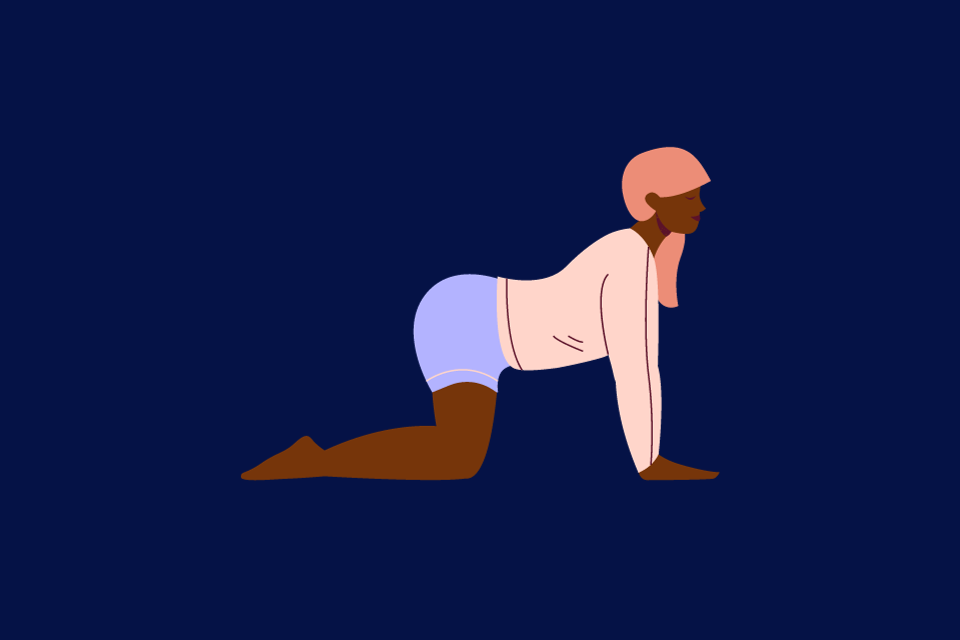
Cat-Cow Pose
Cat-Cow is a gentle yoga pose that involves arching (cow) and rounding (cat) the spine, promoting flexibility and spinal health. It is recommended to arch on the inhale, and round on the exhale for maximum benefits.
Child’s Pose
Child’s Pose is a resting yoga pose where you sit back on your heels, hinge forward at the hips to come into a folded position and stretch your arms forward, providing relaxation and relief for the lower back.
Seated Forward Fold
Seated Forward Fold is a seated pose where your legs are straight out, and you fold forward at the hips, stretching the back and hamstrings while calming the mind.
Digestive Health Poses
Wind-Relieving Pose
Wind-Relieving Pose is a supine yoga posture where you hug your knees to your chest, aiding digestion and releasing tension in the lower abdomen.
Supine Twist
Supine Twist is a reclined pose where you will hug your legs in (similar to a Wind-Relieving pose), send the left or right leg out straight, and drop the knee you are hugging across your body to the opposite side. Do this on both sides. For a deeper stretch, you can look over the opposite shoulder. Both shoulders should remain on the floor, keeping the upper body grounded, stretching the spine, and massaging the abdominal organs.
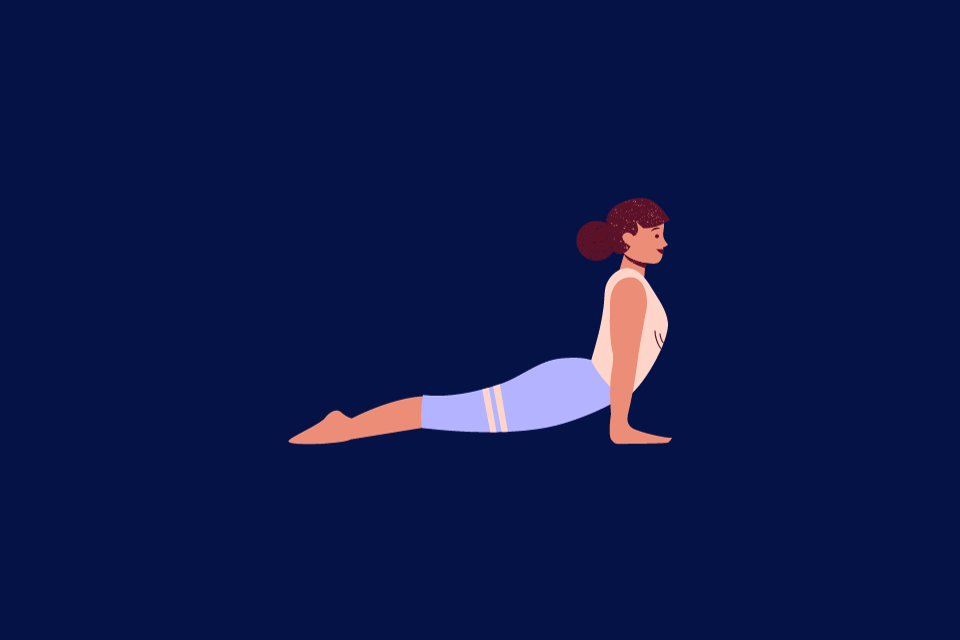
Cobra Pose
Cobra Pose is a backbend where you lay on your stomach, plant your palms on either side of your chest, and press up to lift your chest off the ground while keeping your lower body on the mat, strengthening the back, and opening the chest. If Cobra is too harsh on your back, an even lower-impact alternative would be Sphinx Pose, where you drop your elbows and lower arms to the ground, by your chest, and lift your chest up.
Stress-Relief Poses
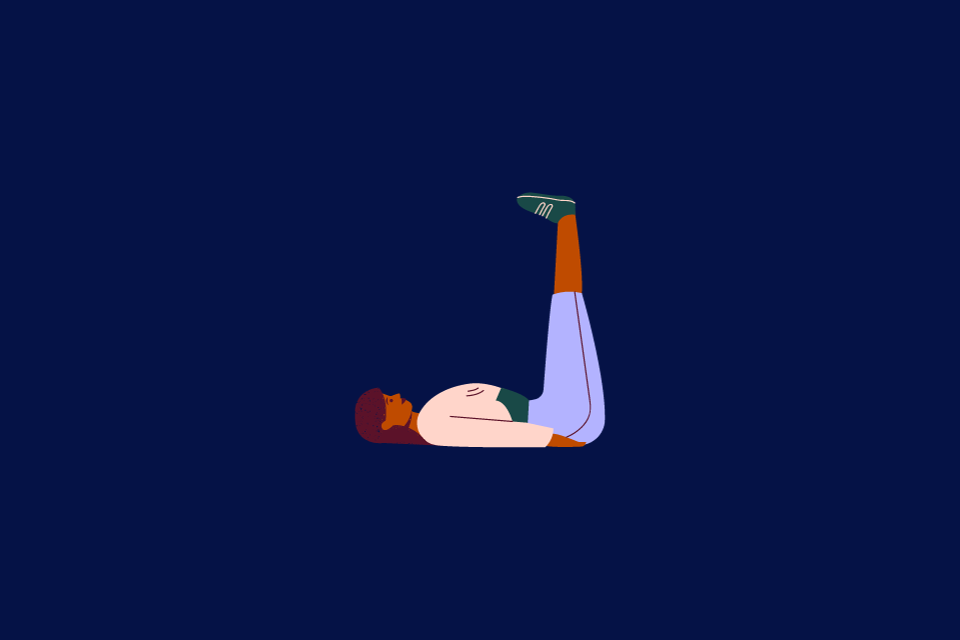
Legs Up the Wall
Legs Up the Wall is a restorative inversion pose where you lie on your back with your legs against a wall, promoting relaxation and improving circulation.
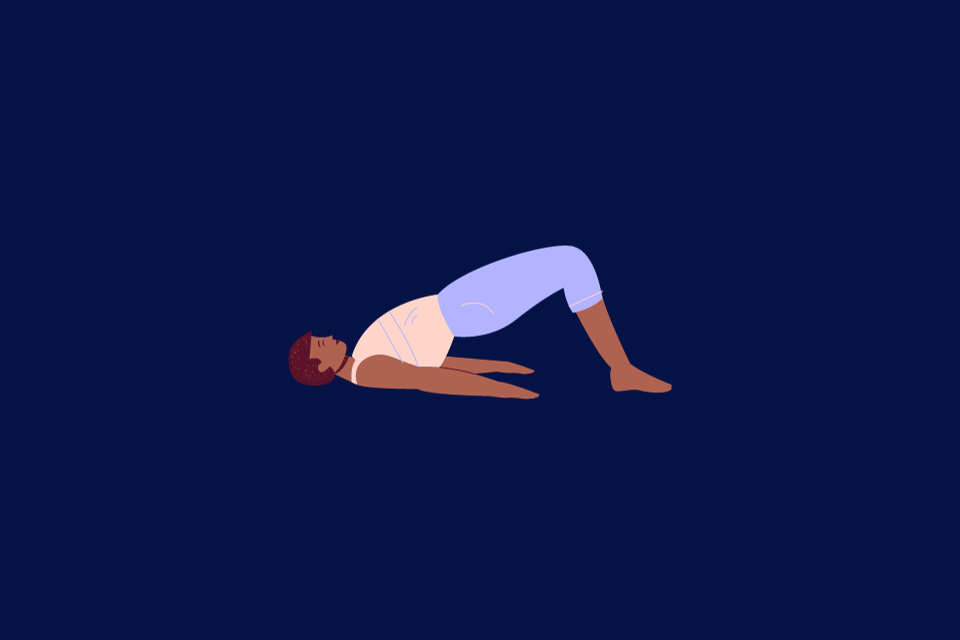
Supported Bridge Pose
Supported Bridge Pose involves raising your hips with the support of props like blocks or a cushion, opening the chest, and stretching the spine.
Savasana
Savasana, or Corpse Pose, is a relaxation pose where you lie flat on your back, letting go of tension and allowing your body to rest deeply.
Strengthening Poses
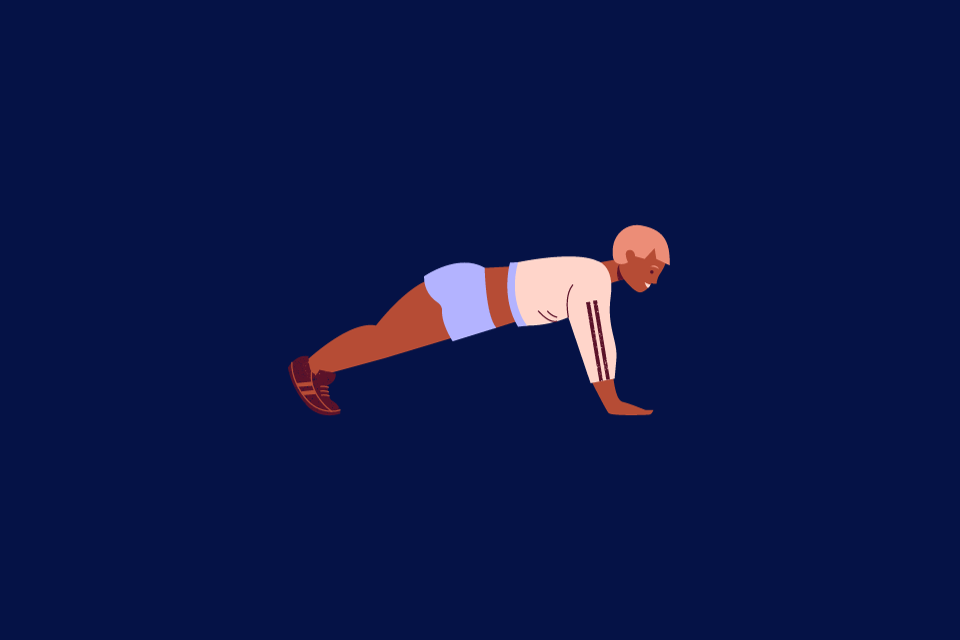
Modified Plank Pose
Modified Plank Pose is a core-strengthening pose where you support your body on your knees instead of your toes, engaging the abdominal muscles.
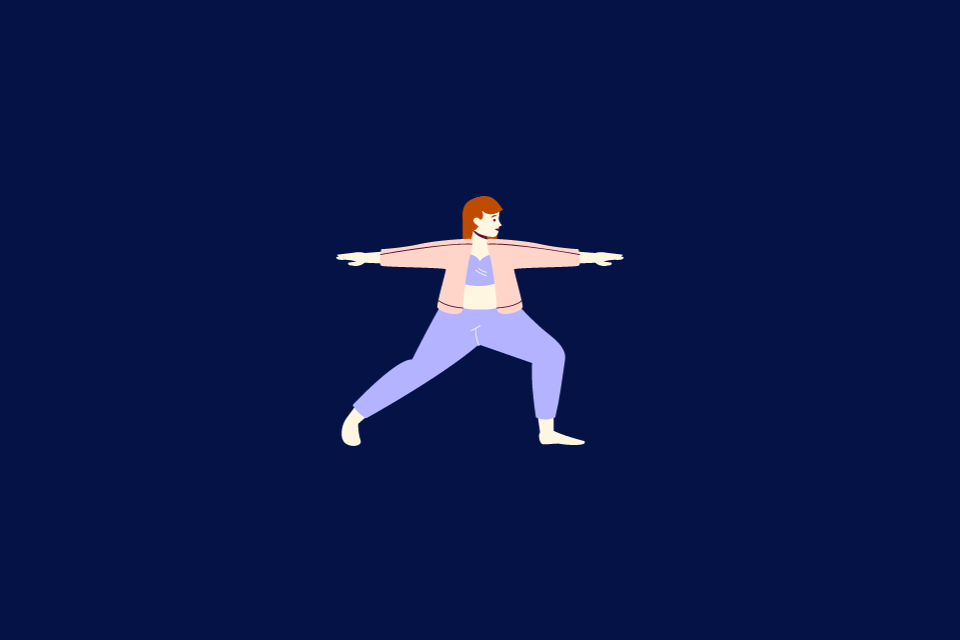
Warrior II Pose
Warrior II Pose is a standing yoga pose where you extend your arms and legs in opposite directions, bending your front knee, and straightening your back knee, promoting strength and balance.
Downward-Facing Dog
Downward-Facing Dog is a spine-relieving pose that builds strength through the shoulders and arms, while also stretching out the lower body. For Downward-Facing Dog, you will start in a neutral table top position, with your hands under your shoulders and knees under your hips. From there, grip the mat with your fingertips, push back into your hips, and rotate the shoulders and elbows inwards, towards your ears. It is okay if your heels do not touch the ground. It is encouraged to pedal out or “walk your dog” to relieve tension. As you get more comfortable with this pose, you can slowly start to push your heels to the ground.
Key Takeaways
- Yoga is an ancient practice that can be beneficial to patients struggling with pancreatitis pain and symptoms
- Different styles of yoga include Yin, Restorative, Iyengar, Vinyasa, and Power
- Yoga has been shown to help manage pain levels, reduce stress and anxiety, and improve digestive function and overall well-being
- Potential risks of yoga include muscle sprains and strains
- Yoga poses that may benefit pancreatitis patients include gentle warm-up and stretching poses, digestive health poses, stress relief poses, and strengthening poses
